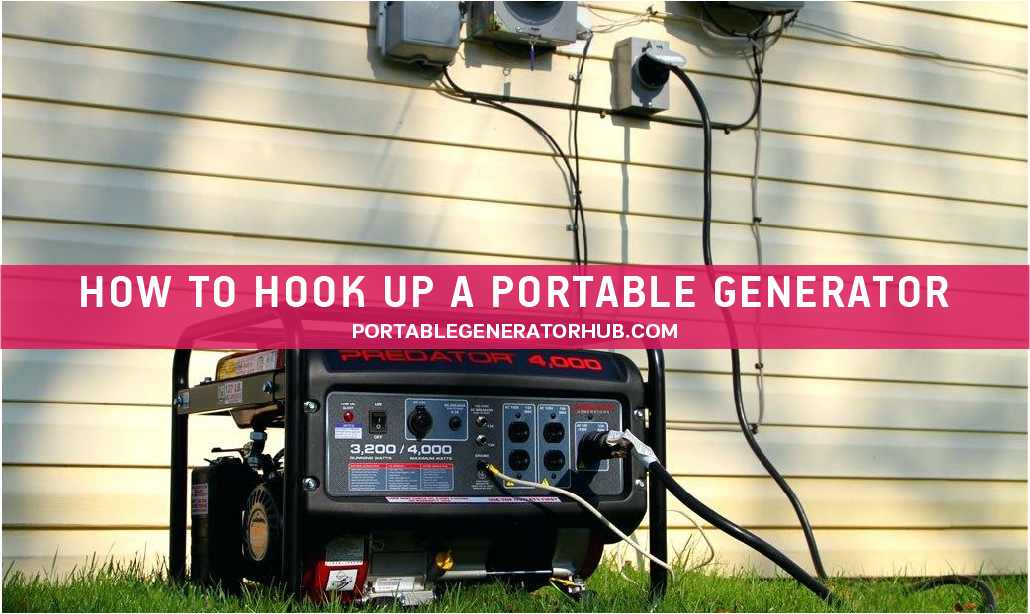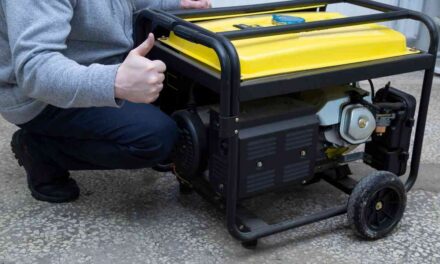
One of the greatest perks of living in a modern home is the ready availability of electrical power for all our gadgets. We tend to fill our houses with all kinds of electronics, and thankfully our homes have convenient wall sockets that can power all these devices.
But sooner or later, a power outage will occur. This means you need to learn How to hook up a Portable Generator after you buy one and weekly twice check portable generator output for Minimize the Risks.
What Is Needed to Hook Up a Portable Generator?
There are two major methods to hook up a portable generator to your house and the items you need depend on the method you prefer. For the first method, you’ll need a generator cord, an electrical panel and a transfer switch. The transfer switch takes power from the generator and sends it to the electrical circuits.
The second method is the use of extension cords. For that, you’ll need a couple of extension cords. Both methods have their advantages and drawbacks.
How to Hook Up a Portable Generator – 3 Easy Steps
If it’s time for you to do it yourself, you can watch the video and then make the same moves. But if you’re insistent on forgoing the services of a pro, then the most sensible first step is to consult your generator manufacturer’s manual. There you will find the instructions that will enable you to learn how to connect a portable generator to your home.
It’s true that our guide here can help, but reading the owner’s manual is a must. The manual may have particular directives that pertain only to the specific model you bought to use as home backup.
1. Place the Generator in a Good Position
This means it should be far enough away so that it’s not too noisy and bothersome for you. At the same time, you have to account for fumes if you’re using a gasoline generator. Carbon monoxide poisoning is certainly a risk if you’re not careful.
2. Plugging In Your Appliances
After checking the oil and fuel, you can start your generator. Then you can power the appliances. Your generator may have the ability to use power transfer systems.
The generator is connected to the whole house, so you don’t have to remove the plugs of your appliances. This way, you power entire circuits instead of individual appliances.
You can also power your lights, AC, and other hardwired devices that don’t have visible power cords. You can also use generator cords, which are extension cords designed to work with generators.
Once you’ve plugged the generator cords in, you can then plug in your appliances to the sockets at the other end of the generator cords.
It’s not recommended that you use ordinary extension cords with a generator. The only time that’s not a bad idea is if you have an inverter generator, and you’re only powering a few appliances.
3. Have an Electrician Do It for You
If you’re in a hurry and you want the job done right with minimum discomfort for yourself, you can just have an electrician do it for you and you will be able to get portable generator installation guide.
Electricians can do this in their sleep, and it won’t be very expensive. Everything will be done safely, and it’ll be over in no time.
But you can watch what they do while you ask questions so the next time, you can do it yourself. If you want, you can even make a video out of the whole thing. You probably have a smartphone that can record videos, so this is easy.
You may end up going with the DIY route because you have a portable generator. That’s a very handy device to have for home backup, because they’re versatile enough that you can use them in campsites.
But when you come home, you will then have to set it up for home use. That’s why it’s also good if you also know the way to connect a portable generator to your home.
How Do You Hook Up a Portable Generator to a House Without a Transfer Switch?
If you don’t have a transfer switch, you can still connect your portable generator to your house using two methods.
1. First Method
The easier method is through the use of extension cords. Plug one or two regular extension cords into one of the outlets of the generator. The cords usually come with two or more female outlets at the other end. So, you can plug your appliances into each of the female outlets.
This method is easy and it does not require any technical skill. However, it has a drawback too. This method will not work for electrical appliances that are already hardwired.
2. Second Method
We need to let you understand that this method should be left for an electrician. Wrong connections could be dangerous. Since you don’t want to use a transfer switch, you need a changeover box. The box has two sides. You’ll connect the generator to one side of the changeover box.
The second side of the box is connected directly to the grid. You can manually flip the changeover switch from grid to generator. After starting your generator, plug the generator cord into one of its AC outlets. Remember, the generator is already linked to the changeover box.
Flip the changeover switch to the generator’s side. The changeover box will take power from the generator and send it to the breaker box and all the electrical circuits in your entire electrical system will receive power.
How Do I Hook Up a Generator to My Breaker Box?
If you’re not an electrician, we don’t advise you to do the hook-up yourself. A lot can go wrong. For instance, you could mistakenly back feed the grid. This means that you could mistakenly connect your generator to the grid lines. And line workers may get electrocuted when your generator is on. This could earn you a jail term.
That said, the breaker box usually comes with two sets of breakers. One set is for the grid supply. You can wire the second set of breakers to your generator. So, when there’s a power failure, you must turn off all the breakers on both sides.
After starting your generator, go back to the breaker box and switch the set of breakers meant for the generator. There’s a breaker for every compartment and every heavy appliance. So, you’ll switch on the breakers for the appliances you want to power on. For instance, you can switch on the breaker for your air conditioner, refrigerator, lights, and water pump.
When power from the grid is restored, go straight to the breaker. Switch off all the breakers on the side of the generator and switch on all the breakers on the side of the grid. Now, you can turn off your generator and remove the cord plugged into the outside port. Don’t forget to close the fuel supply of the generator to prevent over floating.
Can You Plug a Generator into a Wall Socket?
You can’t plug a generator into a regular wall socket. It does not even make any sense to do that. Remember, wall sockets are meant to supply power when there’s power. And your generator also supplies power. The only type of generator that can be plugged into a wall socket is an inverter. You can plug it into a wall socket to charge its battery.
Besides, an outside socket must be installed. The socket is more powerful than the regular indoor sockets. You need to plug the generator cord into the socket. The current generated by the generator goes into the outside socket from where it is taken to the breaker box.





